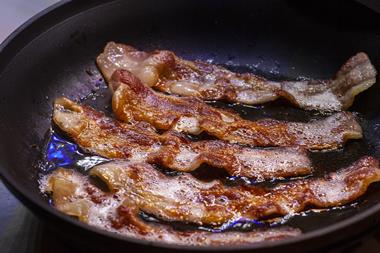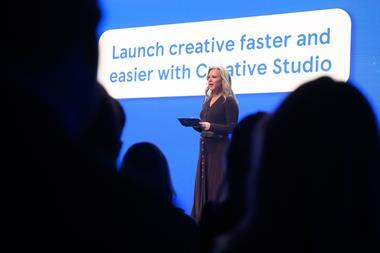Investment in food and drink production has declined in the past decade. But with the government looking to a ‘manufacturing-led recovery’ in the UK, will the situation change? Nick Hughes and Adam Leyland report
If the coalition government is serious about initiating a ‘manufacturing-led recovery’, by rights the food industry should be called on to lead the charge. Food is now Britain’s largest manufacturing sector by value. It’s also one of our most resilient: while total manufacturing turnover fell 9.1% in 2009, turnover from food production increased by 2.7% [ONS]. As a result, banks and shareholders have been all too willing to refinance ailing and stretched businesses. And high-profile casualties have been few and far between.
But survival has often been at the expense of long-term investment in infrastructure. Total capital expenditure by food and drink manufacturers over the past decade fell from £2.4bn per annum to £1.5bn a decrease of 38%. And while it increased somewhat in 2010, the contrast with the major grocery retailers is remarkable: the £1.7bn capex of Tesco in the UK last year exceeded the entire UK manufacturing base.
WISEMAN and the dairy drive
Dairy has seen more investment than most, with Arla’s Aylesbury plant set to follow Nom’s new yoghurt facilities in Shropshire and Wiseman’s mega plant in Bridgwater (left). One of the biggest investments of recent years, Robert Wiseman bounced back from the loss of two major contracts in 2005 by investing £80m in the shiny new 325,000 sq m dairy in Somerset in 2008. The dairy produces eight million litres of milk every week, both conventional and organic, and employs 350 people. Wiseman had originally budgeted for a £46m investment to create a dairy capable of producing 300 million litres of milk a year. But the plans were expanded to 500 million litres a year. The dairy is vertically integrated, with full packaging facilities, and distributes to Wales, South West England and the Midlands.
So why the reluctance to invest? Who’s still spending and why? And what’s needed to make more manufacturers loosen the purse strings?
With the economy flat there’s certainly little motivation in terms of growth potential. “Supermarkets are investing based on stealing market share, and a lot of the extra capacity is focused around non-food,” says OC&C partner Will Hayllar. “Conversely, multinational brand owners are focused on global emerging markets, which means there’s less money to go round in established markets.”
The case for investment clearly needs to be made on a category by category basis. Both Warburtons and Finsbury have invested, in the past year, in capacity to service growing markets for gluten-free and lower-carb bakery products. “For us, investment is cyclical,” says chairman Jonathan Warburton, “although this time round, the risks inherent in a static economy mean we’ve taken a lot more time, and invested a lot more money in the kit, to ensure we get it right.”
Similarly, both Kettle Chips (see box, p38) and Tyrrells crisps are investing to meet capacity constraints, as demand for premium bagged snacks, here and abroad, continues to grow.
“It’s only really when a category is in a big growth phase that you can afford to invest,” argues Hayllar. “You saw that in ready meals, and more recently in salads. With businesses finding it hard to get payback, when you’re looking at incremental automation, you have to think hard about investment, especially when you can find yourself competing in categories with lots of old but spare capacity.”
Hilton uses automotive robots
A lot of capacity has been taken offshore to take advantage of lower labour costs, but investment by Hilton Foods in a state-of-the-art new-build plant in Denmark this year is part of the group’s continuing expansion into new markets, and was set up in partnership with the local Co-op in Denmark. CEO Robert Watson says that in some markets, where labour costs are lower, it can afford to install less automated kit than it might consider in Western Europe. The new plant in Denmark is “the most automated yet”, he adds, using robotic technology “previously reserved for the automotive industry”. “The robots you see in the car ads are now employed in our plants. Eight years ago, it would have been cost-prohibitive, but we estimate that using it, this kit is five generations more advanced.”
In response, many food and drink manufacturers have opted to focus their investment on consolidation-based M&A plays. If investment is not made, however, it’s bad news for everyone, argues Robert Watson, CEO of Hilton Foods. “We have not reduced our investment programme at all. In fact, we think it’s more important, in times of economic pressure and rising costs, that we respond to the need to offer consumers and customers the best value. So we are looking to reduce cost and drive efficiency.”
With money tight, many manufacturers have understandably sought to achieve incremental efficiencies with only minor investment, through aseptic PET and other packaging advances. “It’s often at the back end of the line that the most automation is needed,” says Hayllar, “and that’s relatively cheap.”
Contracts
But there’s also concern about systemic issues specific to the food industry limiting investment. Even in periods of economic prosperity, the lack of contracts in the food industry supply chain can make investment a riskier proposition than in other sectors, says Mark Hill, head of agriculture and food at Deloitte. “Food manufacturing is a cash-absorbing sector and requires substantial investment in plant and working capital. But there isn’t the security of a supply contract, as the only route to market of any volume is through the multiple retailers, and they are only prepared to invest in short-term contracts, if at all.”
Own-label suppliers are particularly restricted by the lack of contracts, and that puts private and family-owned companies in a better position as they can take a long term view, and accept a lower margin, without the pressure of paying out dividends each year.
Flat out KETTLE in capacity drive
Capacity restrictions and a drive for greater automation have driven a multimillion-pound investment in Kettle Foods’ Norwich factory. With production currently “flat out” due to the popularity of Kettle’s “tricky” multipack formats, new owner Diamond Foods will spend £6m to improve the plant. “With multipacks, the way we store our work in progress is quite bulky and tricky because we have to have all five flavours ready and repackaged into the big bag. So we’re putting up a small warehouse for our work in progress,” explains Kettle Foods UK MD Dominic Lowe. “We’re also adding two new packaging machines, taking us to 10 lines, because we’re flat out.” Kettle also plans to increase shifts. “We will run a six-day week and we’re taking on about 40 people as we move our shift patterns,” adds Lowe.
A case in point is petfood manufacturer Wagg Foods, which is investing £6m in further capacity at its Thirsk-based factory (see box). While investment is not without risk, it’s not imperative for Wagg to see an immediate return on its investment, says sales and marketing director Tom Page. “Clearly the bank doesn’t want us to borrow money if we’re not going to pay it back, but there’s no pressing time frame, and it understands if we don’t have that capacity, we can’t fulfil our ambitions for the company.”
Wagg is not the only private firm with an eye on the future. Haribo plans to open a new 50,000 sq ft factory and distribution centre in Leeds in 2013; the Heinz factory in Kendal has announced a £2.5m investment plan to help it scale up production of specialist mother and babyfoods for the Chinese market; dogfood brand Butcher’s is building a brand new facility on its existing manufacturing site in Crick, near Rugby; while bakery giant Warburtons has invested over £10m to enter new product categories. The company also slated £25m to overhaul the bread plant at its site in Bolton. But while it’s true that listed companies such as Premier, Uniq and Northern have struggled to keep up investment in plant and machinery, it’s not ownership that’s the issue here. It’s the state of the finances. And though Premier and Uniq have indeed been saddled with pension and debt liabilities, private equity-owned Burtons Foods and Bakkavör also came perilously close to going under, before restructuring and refinancing deals saved the day.
Conversely, Nestlé, which was widely criticised for shifting production of a number of confectionery brands from the UK to Eastern Europe in the mid-2000s, points out that it has invested more than £200m in its York site since its takeover of the Rowntree business in 1988, including £14m on a cocoa processing plant, £20m on a state-of-the-art Aero factory and most recently £15m on a Kit Kat wafer-making factory that Nestlé Confectionery UK MD David Rennie says is an investment “made for decades to come for the long-term future of manufacturing in York.”
WAGG keeps production in uk
Although Wagg Foods has started exporting to the US, Poland and the Czech Republic, sales and marketing director Tom Page doesn’t see any immediate attraction in setting up plants overseas. “Labour and some raw materials are cheaper, but it might not necessarily appeal when it comes to logistics and organisation.” Indeed, with production once again approaching maximum capacity at its Thirsk-based factory, the family-owned petfood manufacturer is investing a further £6m in new kit and an enlarging factory, delivering 50% more product. Previous investment three years ago was supposed to satisfy output for another five years. But with the business consistently delivering double-digit sales growth since then, the investment services existing demand and gives headroom for future growth.
More recently, US food group plc Diamond Foods gave the green light to a multimillion-pound extension of its Kettle Chips factory in Norwich in February. “The investment was always going to be here,” says Kettle Foods UK MD Dominic Lowe. “With the crisps and chip industry, shipping potatoes over huge distances doesn’t make any sense. One of the reasons we’re here in Norwich is there’s a fantastic potato industry right on our doorstep.”
For Wagg Foods, the temptation to manufacture overseas is also tempered by the fact that a brand such as upmarket dog mix Harringtons sells itself on its British heritage. “Harringtons is about local ingredients, it’s about natural,” says Page. “If we made it in the Czech Republic we could probably do it a lot cheaper than we can in the UK, but it wouldn’t have the heritage we’re trying to create.”
If local sourcing is neither a logistical necessity nor a unique selling point, however, the business case for shifting production to the Continent remains strong. Lowe’s previous role was at Cadbury, which outsourced production of a number of products to Eastern Europe long before the Kraft takeover. The rationale was always based around relative labour rates, he says.
“In Norwich we pay a very decent wage, it’s relatively cheaper than being in central London, but it’s way more expensive than being in Poland.”
That’s why Britain must focus on its strength as a value-added food manufacturer, argues Ben Clarke, CEO of Burtons. Shorn of its debts in a refinance deal last year, it now has the headroom to invest in two areas: capacity and marketing. And while the restructuring has involved difficult decisions, he is committed to UK investment. “Over three years, we have a £25m investment programme in UK-based capex. Having spent my life offshoring manufacturing operations, I’m proud that we are placing all our investment here, but I’ve taken the decision advisedly, based on quality, service and cost. We looked at Central Eastern Europe but it became clear that a UK-based option was the best course.”
Last year’s Food 2030 report identified continued investment in research and development as vital to the UK food sector’s long-term competitiveness.
And encouragingly, the likes of Milk Link, McCormick, Nestlé, Unilever and, most recently, Kraft, have invested millions in UK innovation centres, and R&D capacity and capability is an area of particular strength for UK food manufacturers, according to Angela Coleshill, FDF director of competitiveness.
But while acknowledging the skills base in the UK, Coleshill warns that the UK’s investment in people lags behind rival nations. “There is a need for the current workforce to be upskilled,” she says. “The UK has not invested at technician level. There’s now an ageing population of technicians and we haven’t really got the pipeline we need.”
With inequalities in the taxation system also driving talent abroad, suppliers are calling for the coalition to at last provide a framework for growth. Yet under the Annual Investment Allowance, the government is about to drop tax-free allowances on cap ex to just £25,000. Ella’s Kitchen CEO Paul Lindley is in no doubt the coalition must act.
“The government has staked its reputation on the growth of businesses but they have few clear policies to encourage them to grow. That needs to change.”












No comments yet